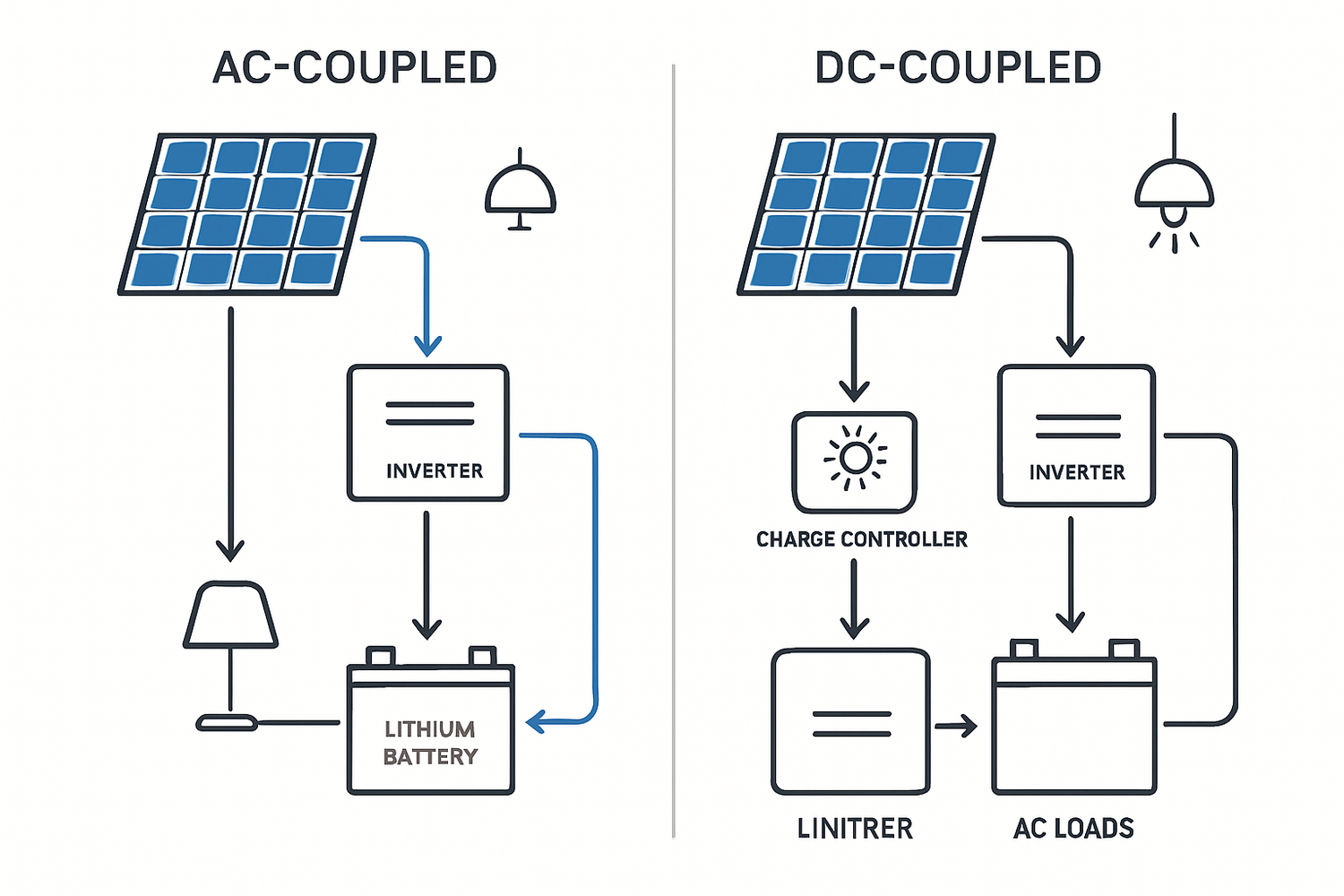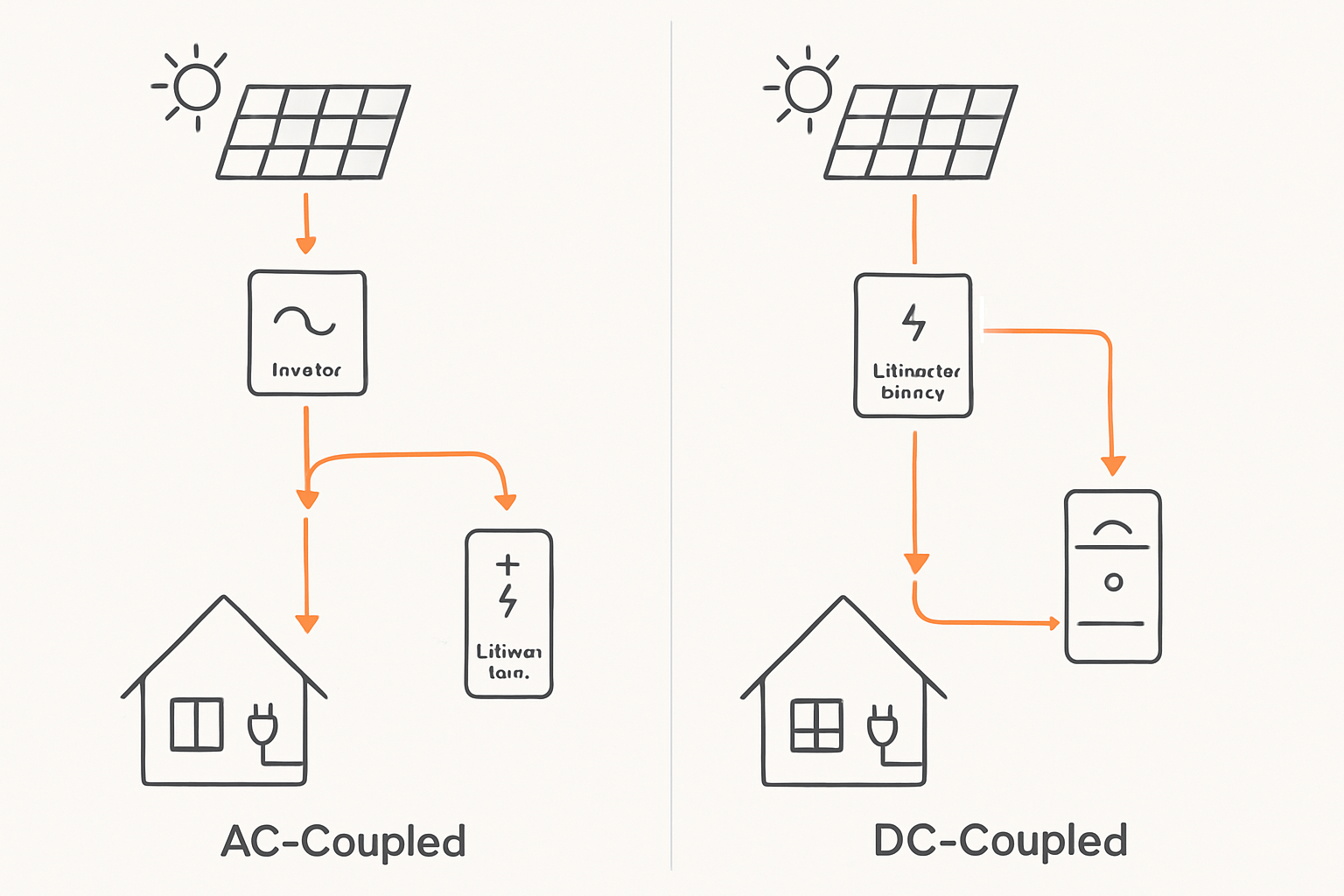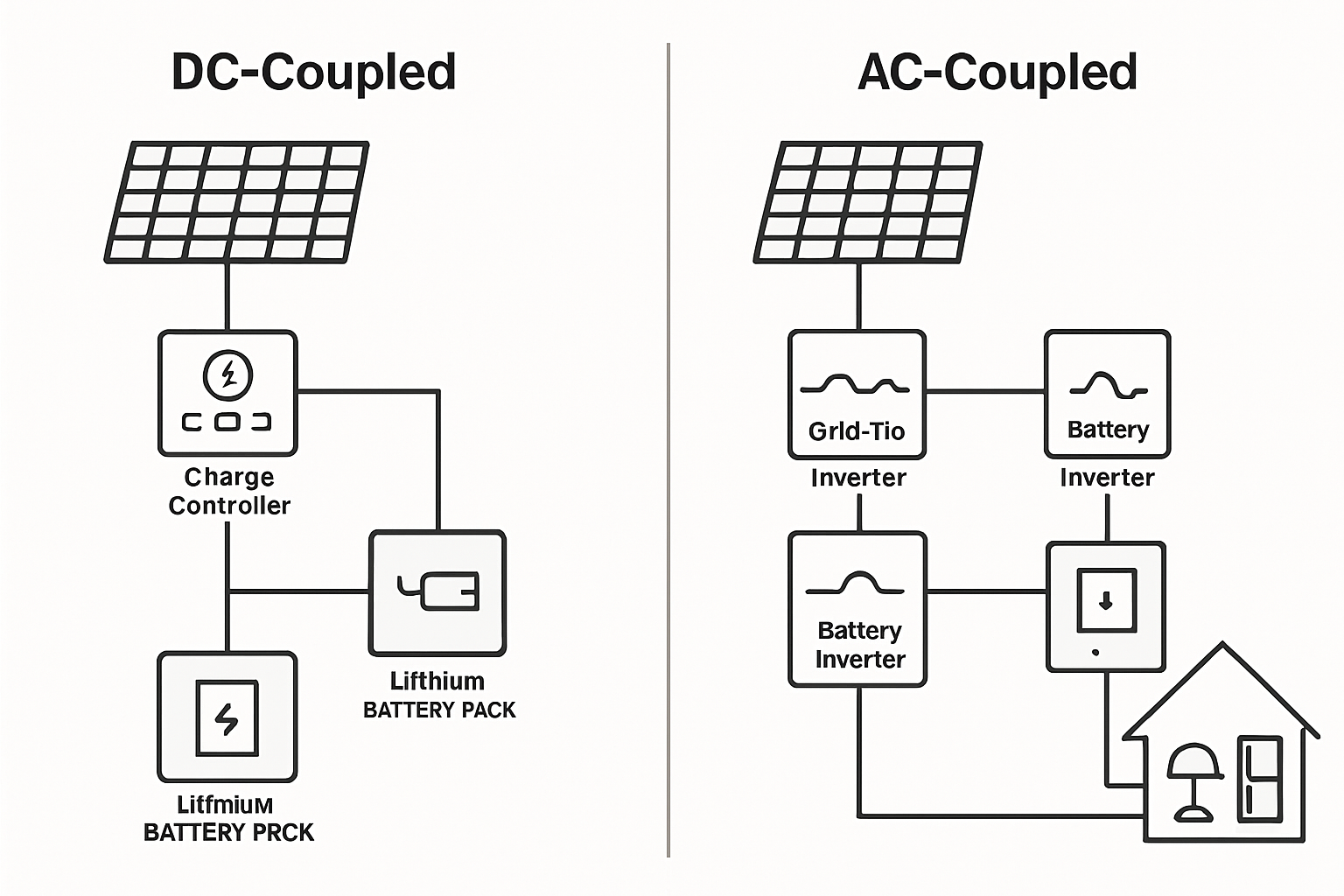Setting up a power system for a remote, off-grid location presents unique challenges. Consider the scenario of powering a small cabin. The goal is energy independence with a reliable, efficient, and long-lasting solution. The core components are straightforward: a solar panel array, an inverter, and a robust battery for storage. A 200ah lithium battery is often a strong candidate for this role. However, a critical design choice emerges early in the process: should the system be AC-coupled or DC-coupled? This decision impacts efficiency, complexity, and future scalability.
System Goals and Component Selection
Before connecting any wires, the first step is to define the energy requirements and select components that align with the project's goals. For an off-grid cabin, this means calculating power needs and choosing a battery and solar array that can meet them consistently.
Defining the Energy Needs of the Cabin
The cabin's daily electrical load determines the required system size. This includes lighting, a small refrigerator, charging ports for electronics, and a water pump. A thorough energy audit might reveal a daily consumption of around 2 kilowatt-hours (kWh). A 12V 200ah lithium iron phosphate (LiFePO4) battery, providing approximately 2.56 kWh of energy (12.8V x 200Ah), offers sufficient capacity with a buffer for overcast days.
The Role of the 200ah Lithium Battery
A 200ah LiFePO4 battery is well-suited for off-grid applications. Its chemistry provides a high depth of discharge, allowing you to use more of its stored energy. It also offers a long cycle life and superior thermal stability compared to other battery types. These features are vital for a system that needs to operate reliably with minimal maintenance for years. The International Renewable Energy Agency (IRENA) highlights that battery storage is increasingly cost-competitive for off-grid applications, making solutions like this more accessible.
Solar Array Sizing
The solar array must be large enough to fully recharge the 200ah lithium battery while also powering daytime loads. The exact size depends on the geographic location and average daily sun hours. Using a tool like the National Renewable Energy Laboratory's (NREL) PVWatts Calculator can help estimate the production of a potential solar installation. For a 2.56 kWh battery, an array of 800 watts to 1 kilowatt would typically be adequate, ensuring the battery is replenished even on shorter winter days.
The Critical Junction: AC vs. DC Coupling Explained
With the main components selected, the next step is to decide how to connect them. This is where the distinction between AC and DC coupling becomes the central focus of the system's design.
What is a DC-Coupled System?
In a DC-coupled architecture, power from the solar panels (which is DC) flows through a solar charge controller directly to the battery bank (also DC). The battery then supplies power to an inverter, which converts it to AC for household appliances. This is a direct and efficient path for storing solar energy.
What is an AC-Coupled System?
In an AC-coupled system, the solar panels are connected to their own grid-tie inverter, which immediately converts the DC power to AC. This AC power can run appliances directly. To charge the battery, a separate battery inverter/charger converts the AC power back to DC. This configuration involves multiple power conversions.
Case Study Analysis: Choosing the Right Coupling Method
For the off-grid cabin, the choice between AC and DC coupling has significant implications for overall system performance and cost. Each approach has distinct advantages in this specific scenario.
The DC-Coupled Approach for the Cabin
For a new, standalone off-grid system, DC coupling is often the more efficient choice. The energy generated by the solar panels is stored in the battery with only one conversion from DC to AC when it's time to power appliances. This minimizes energy loss. DC-coupled systems can achieve round-trip efficiencies of up to 98%, meaning more of the captured solar energy is available for use. This approach also tends to be more affordable as it requires a single hybrid inverter rather than multiple inverters.
The AC-Coupled Approach for the Cabin
An AC-coupled system offers greater flexibility, particularly for future expansion. If the cabin owner wanted to add more solar panels or another power source like a wind turbine later, it's simpler to add another AC-coupled source to the system. However, the efficiency is lower for storing energy due to the multiple DC-to-AC and AC-to-DC conversions. These conversion losses can be between 10-15%, making it a less optimal choice when maximizing every watt is critical.
The Verdict for this Off-Grid System
For this specific case—a new, self-contained off-grid cabin with a 200ah lithium battery—the DC-coupled system is the superior choice. Its higher efficiency ensures that more of the limited solar energy is stored and used, which is crucial for energy security in an off-grid setting. The simplicity and lower initial cost are also significant benefits.
| Feature | DC-Coupled System | AC-Coupled System |
|---|---|---|
| Efficiency | Higher (up to 98%) due to fewer conversions. | Lower (90-94%) due to multiple conversions. |
| Complexity | Simpler for new installations. | More complex wiring and components. |
| Cost | Generally lower due to fewer inverters. | Higher initial cost. |
| Use Case | Ideal for new, completely off-grid systems. | Better for retrofitting existing solar systems. |
| Black Start Capability | Can restart a system from a dead battery using solar alone. | Cannot restart without a functional battery inverter to form a grid. |
Performance and Long-Term Management
Once the system is installed, proper management ensures its longevity and reliability. The performance of the 200ah lithium battery is central to the system's success.
Maximizing the 200ah Battery's Lifespan
To get the most out of a LiFePO4 battery, it's important to operate it within its ideal parameters. This includes protecting it from extreme temperatures and utilizing a high-quality Battery Management System (BMS). The BMS prevents overcharging, over-discharging, and overheating, which are critical for both safety and extending the battery's service life.
Monitoring System Performance
A monitoring system is essential for any off-grid setup. It provides real-time data on energy production from the solar panels, the battery's state of charge, and household consumption. This information allows for intelligent energy management, helping to avoid draining the battery completely and ensuring power is available when needed most. Understanding key metrics is vital, and as detailed in the Ultimate Reference for Solar Storage Performance, factors like round-trip efficiency and depth of discharge directly influence the system's overall value and daily output.
Final Considerations
Choosing between AC and DC coupling for an off-grid system with a 200ah lithium battery depends heavily on the project's specific needs. While AC coupling provides flexibility for future expansion, the superior efficiency and simplicity of a DC-coupled system make it the logical choice for a new, self-contained installation like the cabin in this case study. By prioritizing efficiency, the system can maximize its use of solar energy, providing reliable power and true energy independence. As noted by the U.S. Department of Energy, pairing solar with storage is a key strategy for resilience, allowing you to use power whenever it's needed.
Frequently Asked Questions
Is AC or DC coupling better for an off-grid system?
For a new off-grid system being built from the ground up, DC coupling is generally better due to its higher efficiency and lower complexity. AC coupling is typically preferred when adding a battery to an existing grid-tied solar panel system.
Can I add more batteries to a 200ah lithium battery system?
Yes, you can typically expand a lithium battery bank by adding more batteries in parallel. It is important to use batteries of the same model, age, and chemistry to ensure they charge and discharge evenly. Always consult the manufacturer's guidelines for proper expansion.
How many solar panels do I need for a 200ah lithium battery?
The number of solar panels needed depends on your location's average daily sunlight. For a 12V 200ah battery (about 2.56 kWh), you would generally need between 800 watts and 1 kilowatt of solar panels to ensure it can be fully recharged in a single day, even with less-than-ideal weather conditions.





Leave a comment
All comments are moderated before being published.
This site is protected by hCaptcha and the hCaptcha Privacy Policy and Terms of Service apply.